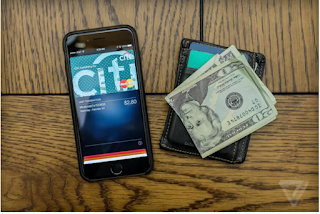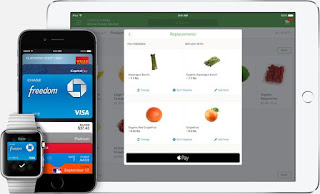"Apple pie?" The woman at the McDonald's drive-through window was confused when I asked if I could use Apple Pay. "No, Apple Pay," I said. "How many?" she asked, still thinking I was asking for an apple pie.
To clear things up, I showed her my iPhone with the image of a credit card on its screen, and she nodded. But then she asked me to hand her my phone to use on the payment terminal inside — a big no-no in Apple pay rules. As I explained that I'd need to use my fingerprint to pay and therefore couldn't hand her my phone, a manager appeared at the window. She told her employee to hold a clunky payment machine out the window for me. Yet, even then, it took two attempts to actually work.
This happened on March 18, 2016, nearly a year and a half after Apple Pay's debut, when I first tested it and ran into a similar issue. Back then, another McDonald's employee flat-out refused to let me use Apple Pay, though it was technically working.
It's not just McDonald's. I also have trouble at Pret A Manger, the trendy fast-food spots that are popular in cities. The Pret below my office in Washington, D.C., has at least eight cash registers, but from what I've experienced, most of them aren't set up for Apple Pay. If I buy something at one of the wrong registers, the cashier must log out of it and log on at the right register before re-entering my purchase so I can use Apple Pay. This has happened at least a dozen times.
A colleague of mine finds that he can't consistently use Apple Pay in New York City cabs, which are supposed to accept Apple Pay.
When a tool like Apple Pay works, it's like magic. You lift your phone, use fingerprint recognition to confirm the purchase, and walk away. The Wallet app in iOS shows you a list of your recent transactions, and adding credit cards is a simple process. But if Apple Pay fails enough times or isn't accepted at enough places, people forget it exists or think it's not worth trying to use. It's a lot like Siri in that way: too many failed attempts and you'll never open it again — at least not on purpose.
Issues at stores like Pret A Manger don't have to do with Apple Pay directly, and could be caused by any number of merchant issues, from broken terminals to software updates. For example, if a store was updating its payment terminals and getting new software, new EMV (the Europay, Mastercard and Visa chip-based debit and credit transactions) capabilities and contactless (Apple Pay, Android Pay) capabilities, one of these three could be delayed waiting for the other two updates.
Some people might also be frustrated by inconsistent experiences with chip card readers. October marked the deadline after which EMV chip readers were supposed to replace magnetic strip swiping, but that hasn't happened. The EMV Migration Forum estimatessome 5 million EMV-ready terminals are in U.S. stores right now, but only 1 million are accepting chips. In my limited experience with EMV chip card readers (mostly at CVS stores), these are slower than swiping a credit card and much slower than using Apple Pay. And if you wondered, Apple Pay does not need EMV to work; it works even when merchants are waiting for their EMV certification.
Several of my friends and family members have set up Apple Pay on their phones, but never use it. They say that they don't know when or where it will work. They're right.
Last month, Apple announced that Apple Pay is available in over 2 million U.S. locations. But, as I've experienced, that doesn't mean that Apple Pay is being used in all of the payment terminals at those locations — or that employees know how to use it.
As for now, the McDonald's employee who asked if I wanted apple pie wasn't too far off base from the confusion that a lot of other people are feeling when it comes to using Apple Pay.




EmoticonEmoticon